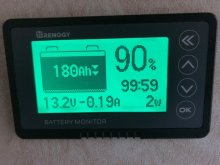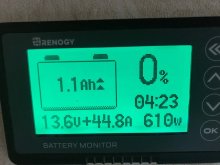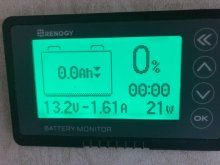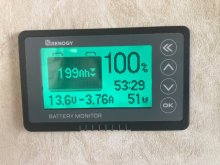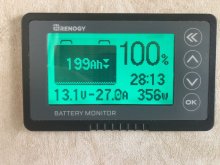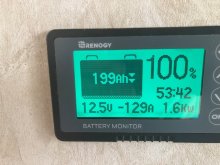padredw
New Member
I have used the Renogy Battery Monitor 500 A on two trips to Colorado which included several nights of "boondocking." I have a simple system: 2 lithium 100Ah batteries, 2 100 W solar panels (portable), a Victron 100/30 charge controller, and a 2000 W inverter. I have a switch to turn off the charger in my control panel whenever I am using the inverter. Everything worked very well and I was able to replenish batteries by noon most days.
But there is one thing about the monitor that puzzles me: If I use a high draw such as microwave even for a minute, the monitor seems to "go crazy" immediately. It begins to flash and show "0" capacity remaining--flat out empty. It will continue this incorrect display until I use the charger (built into my power center). The minute I plug into power source and use the charger, the monitor begins to display correctly.
I can live with this if I have to--I just won't use the microwave--but I would like to know what may be the cause of this behavior of the monitor.
Edit to say, this is one a 34' fifth-wheel trailer.
Photo is of a normal reading. I will appreciate any comments or suggestions.
But there is one thing about the monitor that puzzles me: If I use a high draw such as microwave even for a minute, the monitor seems to "go crazy" immediately. It begins to flash and show "0" capacity remaining--flat out empty. It will continue this incorrect display until I use the charger (built into my power center). The minute I plug into power source and use the charger, the monitor begins to display correctly.
I can live with this if I have to--I just won't use the microwave--but I would like to know what may be the cause of this behavior of the monitor.
Edit to say, this is one a 34' fifth-wheel trailer.
Photo is of a normal reading. I will appreciate any comments or suggestions.
Attachments
Last edited:







